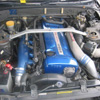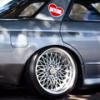What Std Nissan Turbo's Match Up
Announcements
-
Similar Content
-
Latest Posts
-
Hey good to see you on the forums! Haha Considering this cars past with electronic issues I am leaning towards it being a wiring fault somewhere in the engine bay. When testing the ac relay in the fuse box there was no earth trigger. I am probably going to try "bench test" the compressor by giving it direct ground and power to see if i can hear the ac clutch click otherwise I will be pretty sure I have a dead compressor. If it does work then I will be tracing some wiring it seems.
-
By soviet_merlin · Posted
Haha, the big brain move is to buy a second set of headlights to clean up or retrofit. I definitely don't have one sitting in a cupboard that hasn't been touched since it arrived. Just have to ignore the intrusive thoughts that suggest the second set is not quite as good as it could be and to buy a third set that the job would definitely get done with -
Nah I'm talking about the GTS-t with 15" wheels and single piston brakes. I've seen them pop up occasionally over the years. You can see it in the brochures. Most were early models (aka Series 1).
-
Oh man... I've been here, that's for sure. I love my ugly but still functional headlights that can never come apart again.
-










Recommended Posts
Create an account or sign in to comment
You need to be a member in order to leave a comment
Create an account
Sign up for a new account in our community. It's easy!
Register a new accountSign in
Already have an account? Sign in here.
Sign In Now